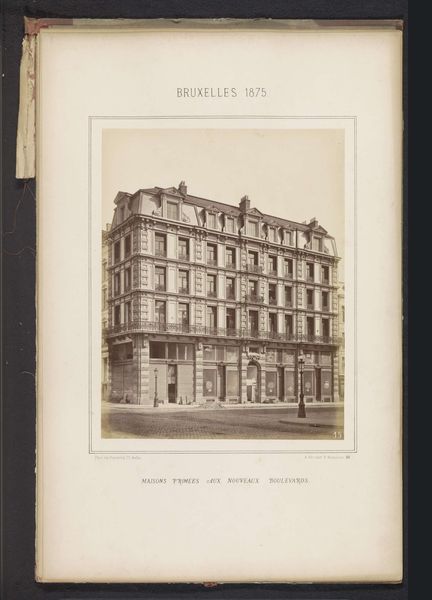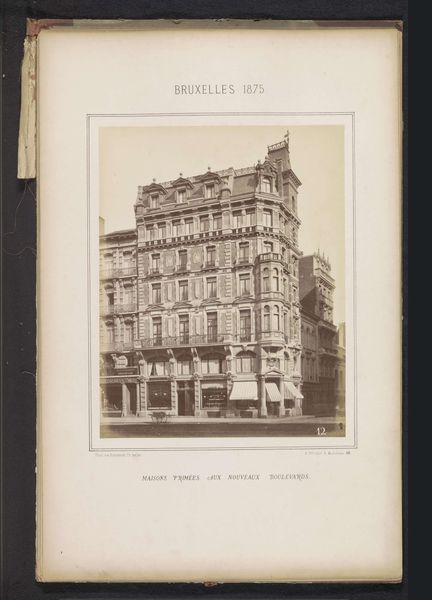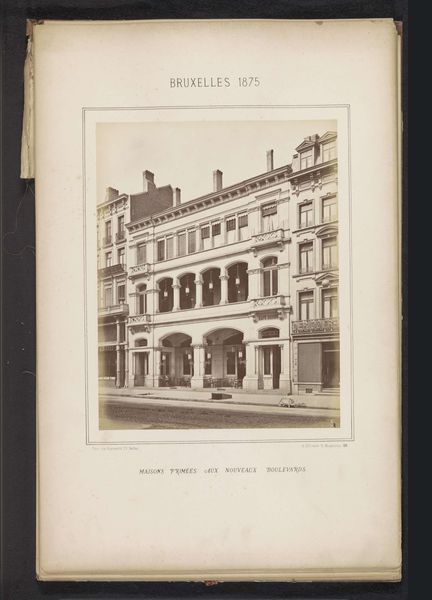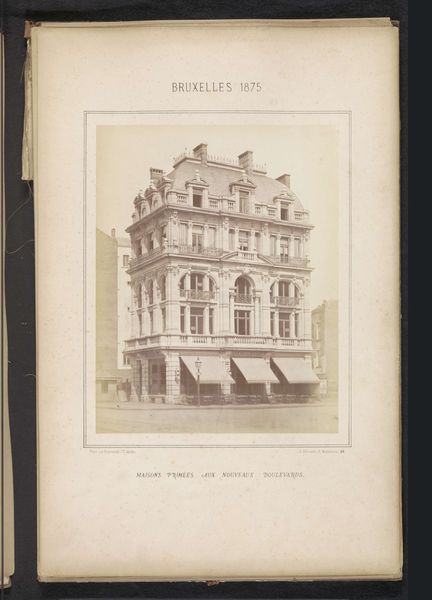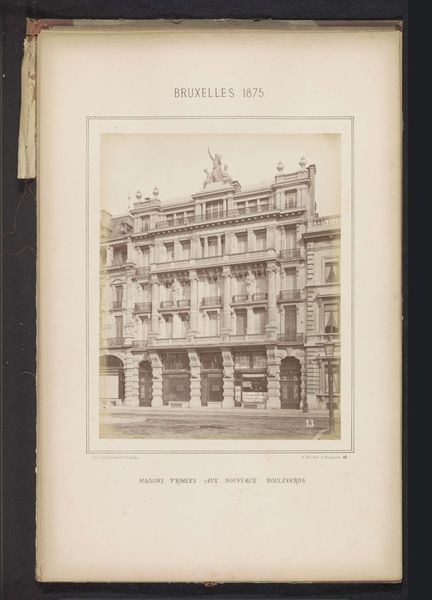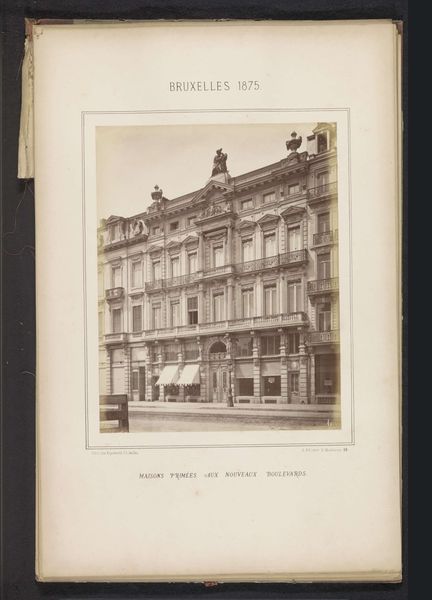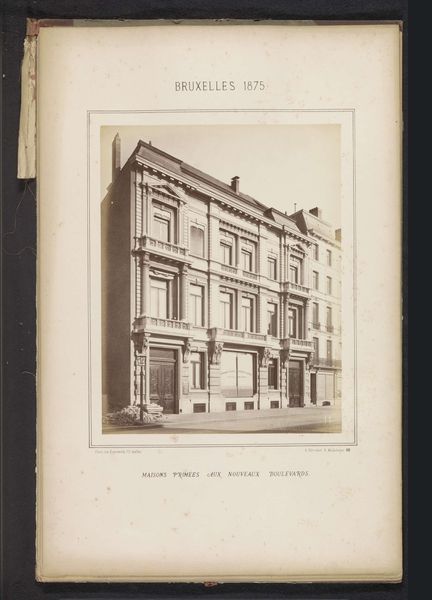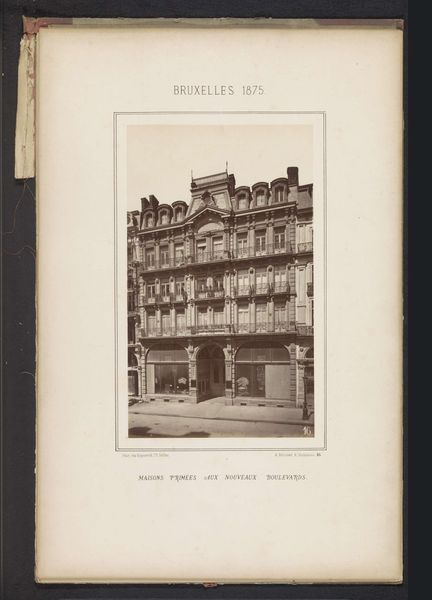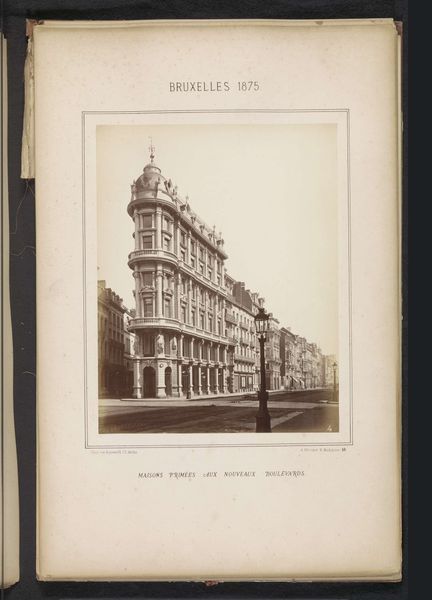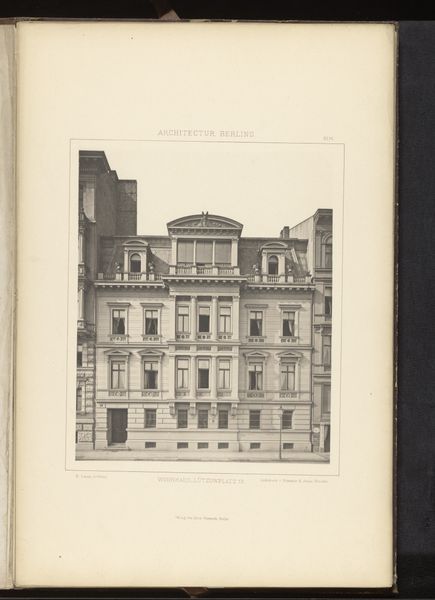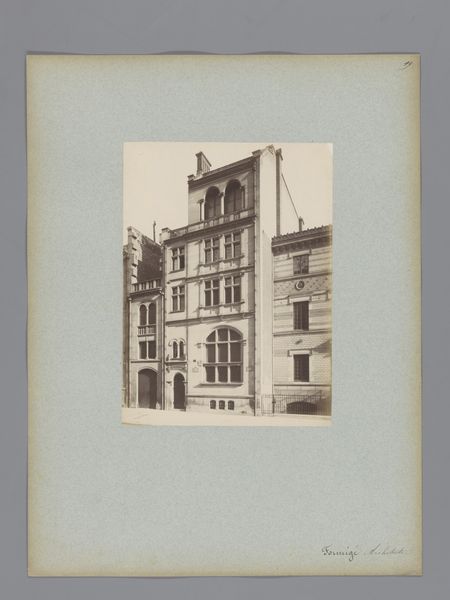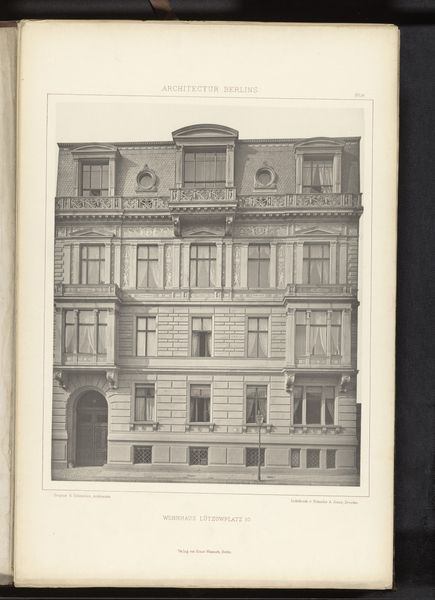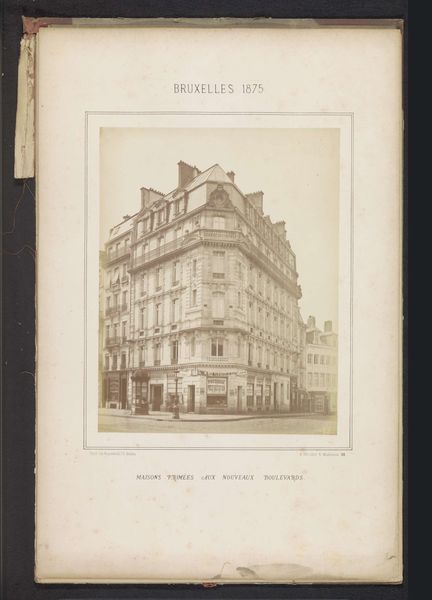
Exterieur van het Maison Thonet aan de Boulevard du Nord te Brussel 1875
0:00
0:00
print, photography, albumen-print
#
neoclassicism
# print
#
photography
#
cityscape
#
albumen-print
#
building
Dimensions: height 270 mm, width 209 mm
Copyright: Rijks Museum: Open Domain
Curator: What strikes me immediately is the stark verticality and rigid geometry captured in this albumen print. The artist, Alexandre de Blochouse, in 1875, presents "Exterieur van het Maison Thonet aan de Boulevard du Nord te Brussel"—the exterior of the Thonet House. Editor: The Neoclassical structure commands such a stoic, almost austere presence. Despite its clear architectural ornamentation, its essence feels oddly muted, rendered even more so in this sepia tone. It's like a frozen moment, devoid of palpable life. Curator: Indeed. Blochouse’s manipulation of light accentuates the inherent structure. Observe the carefully plotted progression of shadows which articulate the façade—notice, too, the strong contrast in value. These elements work in harmony to convey stability and perhaps a hint of the grand urban designs prevalent at the time. Editor: I see the ordered facade but the photographic medium brings an empirical quality too. There are traces of life around the street-level shops, like the awning detail and printed storefront signs, all indicating the modern urban growth Brussels was undergoing during the late 19th century. These suggest the context which propelled a boom in commerce at this moment in the city’s history. Curator: Quite right, each balcony, pilaster, and window pane functions as an individual component meticulously organized within a rigid compositional system, demonstrating Neoclassical architectural sensibilities. But the image’s structure reaches beyond pure aesthetics—it invokes larger themes, like modern ideas around living in and ordering civic space. Editor: True, consider this piece as more than mere depiction; it epitomizes photography's emergent role. Mass production coupled with accessible art—it’s all entwined. Blochouse delivers far more than architectural record. It speaks to rapid commercial and civic transformations underway then, a point easily dismissed by purely formal analyses. Curator: So in appreciating it as an objet d’art and cultural artifact, each interpretation unveils distinctive facets which together weave this singular encounter. Editor: And understanding that interaction enriches how one views even something that first impressions call plain. It’s a lesson applicable outside gallery settings also, of course.
Comments
No comments
Be the first to comment and join the conversation on the ultimate creative platform.

